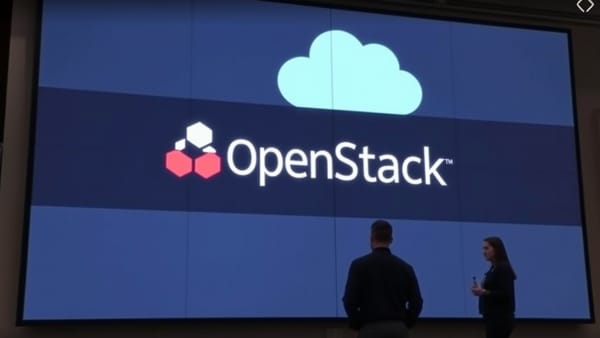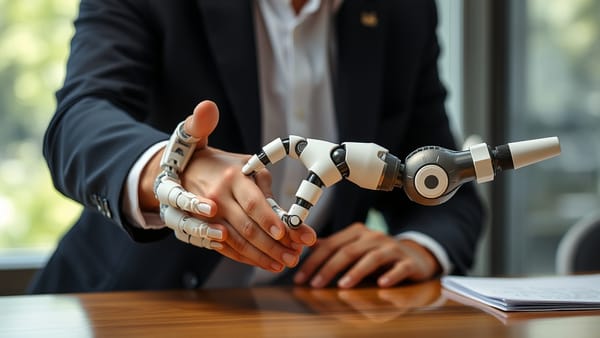Precision Production: How AI Automation is Revolutionizing Manufacturing Floors
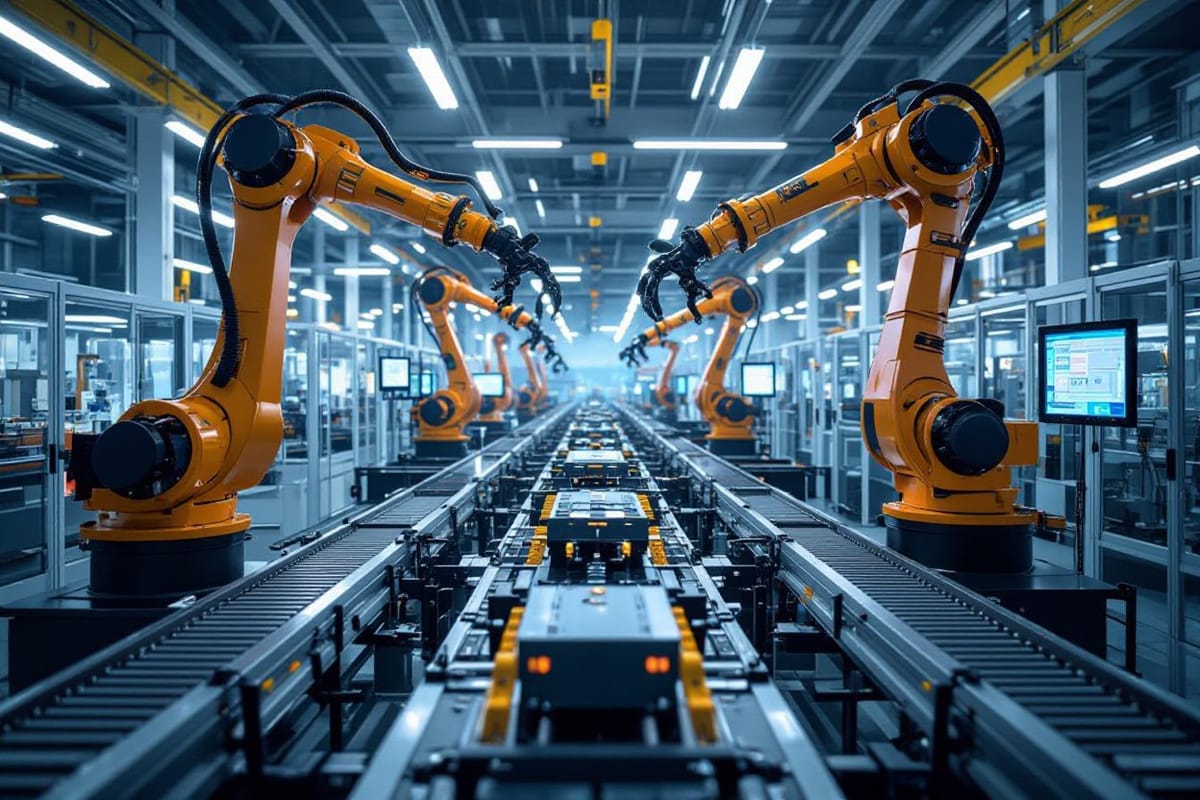
Manufacturing on the modern floor is being transformed by AI-driven automation that sharpens quality control, optimizes workflows, and reduces downtime; you gain real-time insights from predictive maintenance, adaptive robotics, and data-driven scheduling so your operations scale with higher precision and lower waste, enabling faster decision-making and consistent product standards while freeing your teams to focus on innovation.
Key Takeaways:
- Predictive maintenance powered by AI reduces unplanned downtime and lowers maintenance costs by detecting faults from sensor data before failures occur.
- Adaptive robotics and computer vision boost throughput and product quality by enabling high-precision, flexible automation and real-time defect detection.
- Data-driven process optimization and digital twins increase yield and resource efficiency via continuous feedback, simulation, and automated control adjustments.
The Rise of AI Automation
You see AI automating tasks from adaptive toolpath optimization to in-line optical inspection; pilot programs report throughput gains of 20–40% and predictive maintenance cutting unplanned downtime by up to 50%. Adaptive control systems have lowered scrap rates by around 30% on high-precision parts. For concrete case studies and machining-specific methods consult How AI in Manufacturing is Changing Precision Machining.
Historical Context
You trace the shift from punched cards and early CNCs in the 1970s through PLC-driven automation to robotics in the 1990s, then the sensor and connectivity boom of the 2010s that enabled data-rich manufacturing. Industry 4.0 frameworks from the 2010s turned isolated control systems into integrated information flows, allowing machine learning pilots after 2015 to leverage decades of operational data for real-time decisions.
Technological Advancements
You now deploy edge AI for sub-10ms inference, computer vision that detects surface defects at micron-scale, and reinforcement-learning-based toolpath tuning that reduces cycle time 10–25% in pilots. Digital twins simulate wear and process variation before you commit to production changes, while standardized protocols like OPC UA streamline data exchange between controllers and cloud services.
You integrate sensors—acoustic emission, spindle current, force, and high-resolution cameras—with models such as CNNs for visual inspection and time-series transformers for anomaly detection. Local inference on devices like NVIDIA Jetson or Intel Movidius keeps latency low, and bi-directional links to MES/ERP let you close the loop: models suggest parameter tweaks, operators validate, and systems apply the optimized settings automatically.
Benefits of AI in Manufacturing
AI delivers measurable gains across throughput, uptime, and quality: you can expect 15–40% productivity improvements from automated scheduling and robotics, unplanned downtime drops of 20–50% via predictive maintenance, and defect reductions of up to 30% through vision-driven inspection. Case studies from electronics and automotive lines show shorter lead times, lower scrap rates, and faster ramp-ups for new SKUs when AI is integrated into the shop‑floor control loop.
Increased Efficiency
You reduce cycle times and idle periods by applying AI-driven scheduling, adaptive robotics, and predictive maintenance—dynamic sequencing can cut cycle times 20–40%, while analytics-based maintenance programs have been shown to lower unplanned downtime by up to 50%. Real-world deployments replace manual changeovers with automated tool paths and orchestrated robot fleets, enabling you to scale throughput without proportionally increasing labor or capital.
Enhanced Precision
You achieve tighter tolerances and fewer defects using computer vision, sensor fusion, and closed‑loop control: vision systems commonly exceed 98% defect-detection rates, and machine-adjusted CNC and assembly heads maintain tolerances down to single-digit microns in high‑precision lines. That precision translates into lower rework, higher first-pass yields, and reduced warranty costs for precision components.
Further gains come from digital twins and on‑tool model adaptation: by streaming high-frequency sensor data into local models, you enable real‑time corrective actions—adjusting feed rates, tool offsets, or robot trajectories within milliseconds—cutting process variance by up to 70% in pilot programs and letting you sustain micrometer-level consistency across long production runs.
Key AI Technologies Transforming Manufacturing
Machine Learning
Machine learning powers predictive maintenance, quality inspection, and demand forecasting on your line; models trained on vibration, temperature and current signals from thousands of cycles can flag bearing or motor faults weeks ahead. Deployments often cut unplanned downtime 20–40% and trim maintenance costs by up to 30%. Convolutional neural nets for visual inspection have reduced false rejects by over 50% on PCB lines while pushing defect detection above 95%, letting you raise yield without slowing throughput.
Robotics and Automation
AI-enabled robots perform precision welding, pick-and-place and assembly with vision and force feedback delivering sub-millimeter accuracy; cobots from major vendors let you retool cells in minutes, cutting changeover time by as much as 40%. Repeatability of 0.02–0.05 mm lets you automate small-batch and mixed-model runs that were previously manual, freeing skilled operators for higher-value tasks and improving throughput.
Fleet orchestration and digital twins let you simulate workloads and schedule dozens of robots, often improving OEE 10–25% in pilot programs; reinforcement learning trims cycle times by optimizing motion paths, shaving seconds per part. Integrate robot controllers with your MES/ERP for dynamic job dispatch, adopt ISO/TS 15066-compliant sensors for safe collaboration, and expect payback windows commonly in the 6–18 month range depending on scale.
Case Studies of AI Implementation
Data from multiple plants shows AI delivers measurable gains: you can reduce defects, shorten downtime, and raise throughput within months by targeting high-impact lines and using iterative pilots that scale. The examples below show concrete KPIs, timelines, and what you can replicate on your floor.
- 1) Siemens — Amberg plant: AI-driven visual inspection increased product consistency to 99.998% and cut scrap by ~90% over five years; manual inspection workload fell ~75%, letting you redeploy inspectors to maintenance and optimization tasks.
- 2) Bosch pilot (manufacturing lines): edge AI for predictive maintenance reduced unplanned downtime by ~40% and extended MTBF by ~35% within 18 months, showing you can turn sensor data into scheduleable repairs and fewer emergency stoppages.
- 3) Foxconn (assembly automation): deployment of collaborative robots plus AI vision slashed defect rates ~60%, automated ~30% of assembly steps, and boosted throughput ~20% in a two-year rollout, offering a blueprint for gradual human-robot task shifting you can follow.
- 4) Automotive OEM scheduling pilot: AI-enabled production scheduling cut changeover time by ~40%, raising line utilization from ~68% to ~85% over a nine-month program, so you can prioritize sequencing and takt improvements to maximize OEE.
- 5) Mid-size food manufacturer: computer-vision sorting handled 2,500 units/min, reduced customer returns by ~85%, and saved ~$1.2M annually, demonstrating how you can scale low-latency inference for high-volume inspection tasks.
Successful Corporate Transformations
Large manufacturers that succeeded treated AI as operations engineering: you should expect cross-functional teams, standardized data pipelines, and phased rollouts. Siemens and Foxconn matched measurable targets—99.998% quality and 20% throughput gains—by starting on a single line, proving ROI in 6–12 months, then scaling across plants using templated models and governance you can adopt.
Lessons Learned
High-impact pilots focus on a single KPI, such as scrap rate or MTTR, with clear baselines; you should collect labeled data (often 5k–20k examples), set a 6–12 month pilot window, and aim for at least 15–25% improvement or payback within 24 months to justify scale.
Operationalize those lessons by forming a compact team—one process engineer, one data scientist, one edge-devops, and a plant champion—execute a 3–6 month data readiness sprint, run A/B tests on the line, and standardize model retraining cadence (monthly or quarterly depending on drift). Track OEE, MTTR, scrap rate, and false positive/negative inspection rates; embed models at the edge for <100 ms inference, and budget for continuous labeling and change management so your deployments sustain the initial gains.
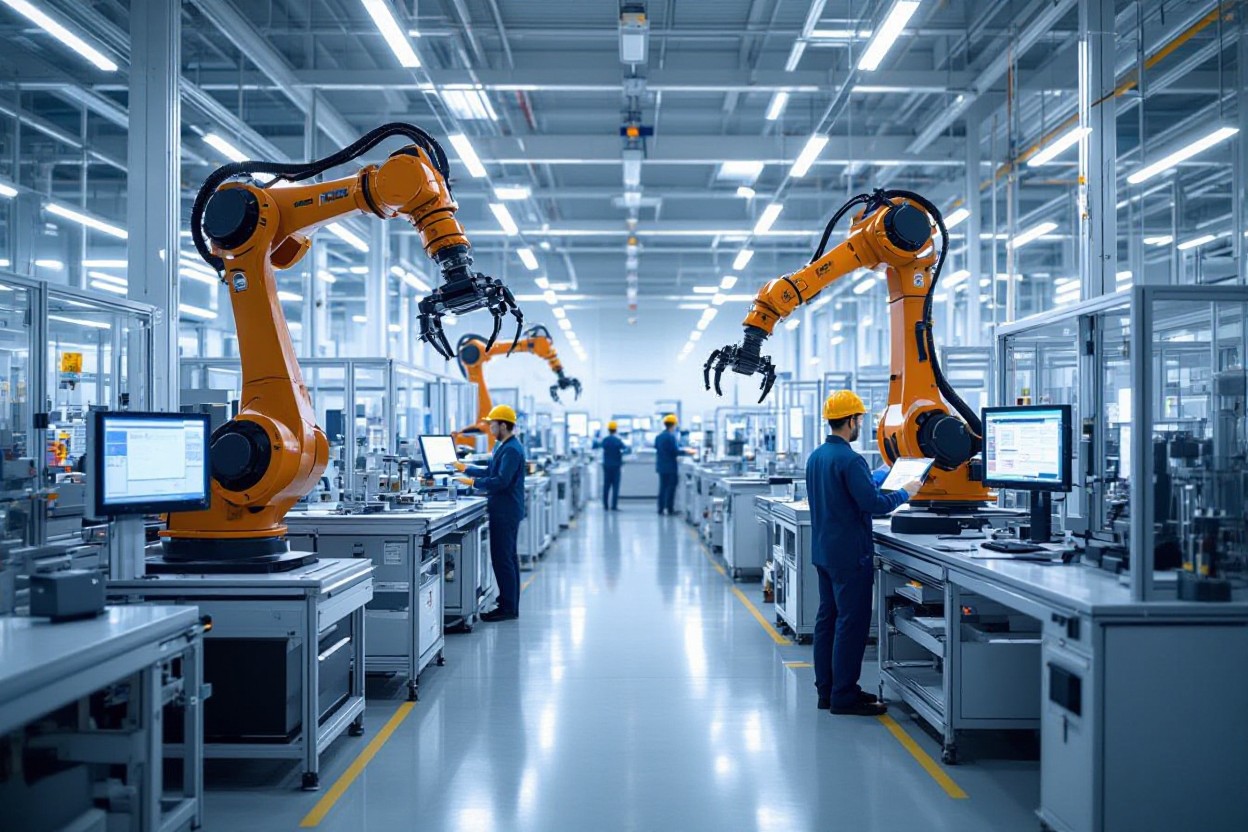
Challenges and Considerations
Workforce Impact
Automation reallocates repetitive tasks toward AI oversight, data analysis and robotics maintenance, so you must invest in reskilling and role redesign. Amazon committed $700 million to upskill 100,000 workers by 2025, and Siemens' Amberg plant retrained technicians while achieving a 99.99885% quality yield, showing how training preserves capability. Map competencies, create clear career paths for technicians turned data stewards, and partner with local training providers to limit productivity dips during transitions.
Data Security and Ethics
Your AI stacks gather high-frequency sensor feeds and OPC-UA logs that become prime targets for ransomware and IP theft; IBM's 2023 Cost of a Data Breach Report pegged the global average cost at $4.45 million, and incidents like the 2021 JBS outage demonstrate operational risk. Apply encryption (AES‑256), network segmentation and ISO/IEC 27001 or NIST frameworks while drafting privacy rules that limit worker surveillance and define data ownership.
Implement edge processing and federated learning so sensitive sensor data stays on-site while models still improve, and produce synthetic datasets to reduce exposure. Enforce AES‑256 at rest, TLS 1.3 in transit, hardware roots of trust (TPM), least‑privilege IAM and multifactor authentication. Run quarterly tabletop drills—IBM found average breach lifecycle of 277 days—vet vendors for SOC 2/ISO audits, and publish transparent consent and retention policies to address surveillance ethics and supply‑chain vulnerabilities.
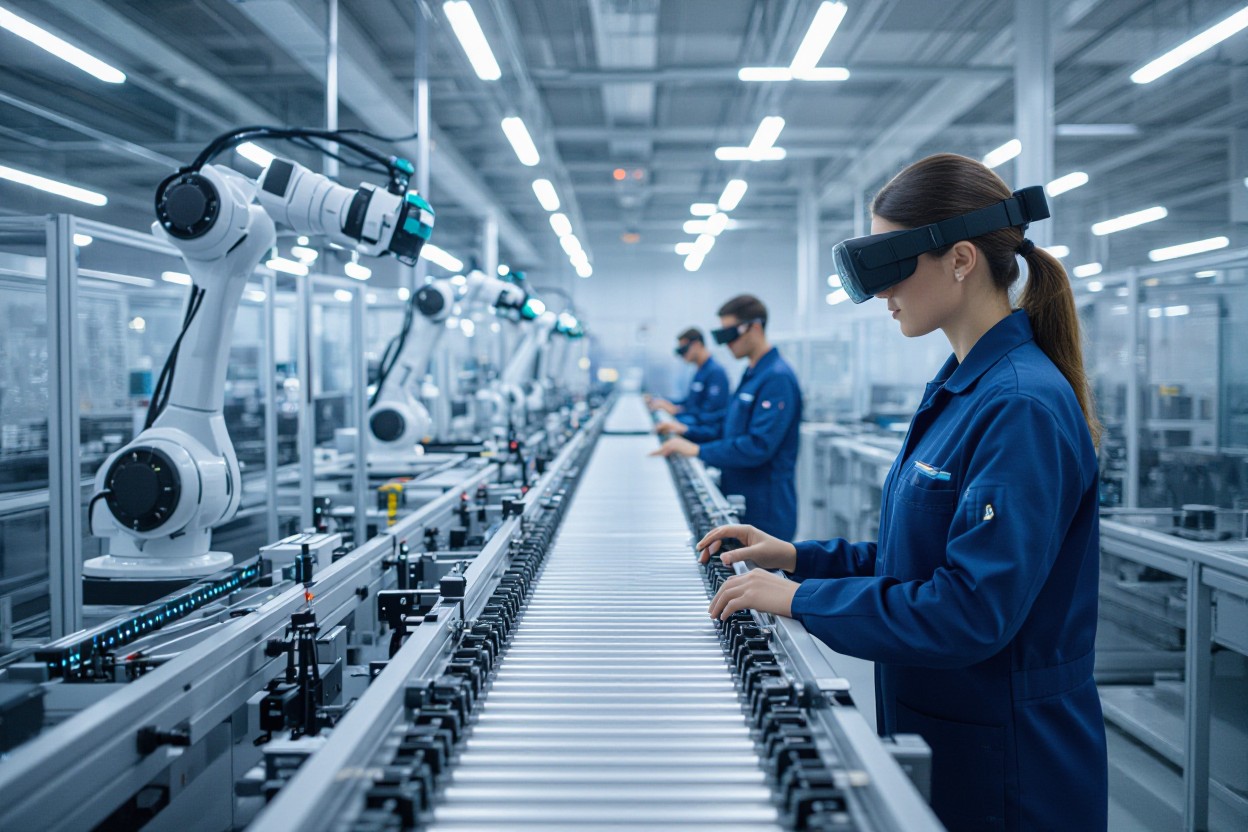
Future Trends in AI and Manufacturing
Predictive Maintenance
Your sensors, vibration signatures and thermal imaging feed ML models that predict component failure days or weeks ahead. Industry studies report predictive maintenance can reduce unplanned downtime by 30–50% and lower maintenance costs by 20–25% (Deloitte); companies like GE and Rolls‑Royce use digital twins to move from calendar‑based checks to condition‑based servicing, extending parts life and cutting spare‑parts inventories.
Smart Factories
Smart factories combine IIoT, edge inference, MES and cloud orchestration so you can run dynamic scheduling, autonomous material handling and real‑time quality control. Siemens’ Amberg plant demonstrates defect rates below 0.002%, while cobots and AGVs let a single operator supervise multiple cells, increasing throughput and flexibility with smaller workforce shifts.
Digital twins let you simulate line changes before committing hardware—OEMs like BMW and Ford use virtual commissioning to shorten ramp‑up by weeks. You can integrate AR for guided maintenance, federated learning for cross‑site model training without raw data exchange, and energy‑optimization algorithms to cut utility costs, though this requires new cybersecurity and analytics skills for your staff.
Summing up
With these considerations you can harness AI automation to boost precision, reduce waste, and scale consistent quality on your manufacturing floor; you should align data strategy, workforce training, and maintenance practices while monitoring ethics and safety. For further reading see How AI is Changing the Manufacturing Industry | TPM.
FAQ
Q: What measurable benefits does AI automation deliver on manufacturing floors?
A: AI automation raises yield and consistency by enabling real-time process control and defect detection—typical improvements range from 5–25% in yield and 10–25% in overall equipment effectiveness (OEE). Predictive maintenance driven by machine learning can reduce unplanned downtime 30–50% and lower maintenance costs by up to 20%. Automated visual inspection and anomaly detection catch defects earlier and faster, often improving defect-detection rates to >90% versus manual inspection and reducing scrap and rework. Additional gains include cycle-time reductions (5–15%), energy savings from optimized operations (around 5–20%), and faster time-to-market through more stable, repeatable processes. Mid-sized plants commonly see payback in 6–18 months for well-scoped pilots.
Q: How do manufacturers integrate AI systems with existing equipment and IT/OT stacks?
A: Integration starts with a process and data readiness assessment to identify high-value use cases. Typical steps: (1) instrument assets or leverage existing sensors; (2) standardize and stream data via OPC UA, MQTT or REST APIs; (3) deploy edge compute for low-latency inference and cloud for model training and analytics; (4) run a focused pilot on a single line to validate models and ROI; (5) implement MLOps for versioning, monitoring, and continuous retraining. Cybersecurity and operations alignment are necessary: segment OT networks, enforce access controls and encryption, and coordinate IT/OT change management. Choose vendors with open interfaces and strong support for industrial protocols to minimize custom integration work.
Q: What workforce changes should organizations expect and how should they manage reskilling?
A: Automation shifts many repetitive tasks toward monitoring, exception-handling, and higher-value activities such as process optimization and AI model oversight. While some task-level roles are automated, new roles emerge—AI operators, data engineers, analytics specialists, and advanced maintenance technicians. Effective reskilling programs combine hands-on training, short technical courses, and on-the-job mentorship; prioritize cross-functional teams for initial pilots so shop-floor expertise informs model development. Track metrics such as time-to-competency, rate of internal role transitions, and productivity per operator. Maintain human-in-the-loop workflows for quality assurance and gradual automation expansion to preserve institutional knowledge and minimize disruption.
